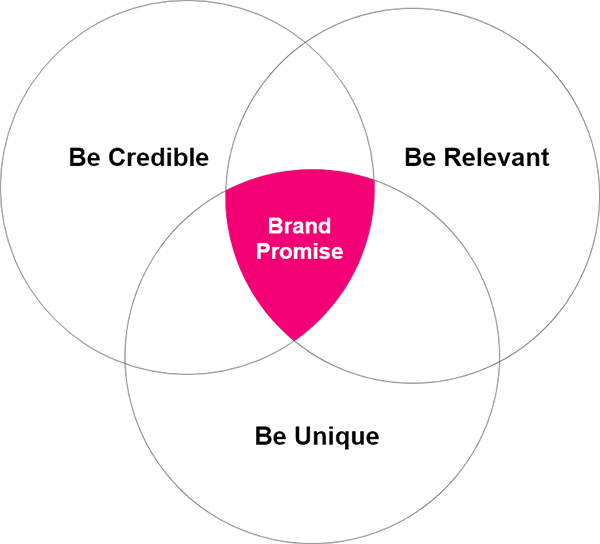How to Create a Brand Strategy
The Science Of Creating An Authentic Brand

Why do you need a Brand Strategy? Simply put: Brand Strategy is the first step to building a brand because it builds the foundation and guides all downstream decisions and activities your business will make.
You most likely have a business strategy. You may even have a marketing strategy. But what sits in-between both is your Brand Strategy.
Skipping ahead to marketing strategy without having a Brand Strategy is the most common mistake most business owners make.
We refer to Brand Strategy as “The Science of the Branding Process.”
Understanding Brand Strategy can be overwhelming, which is why we’ve created this guide to teach you the fundamentals of comprising your Brand Strategy. While not exhaustive, it should provide you with a starting point in the world of strategy.
(For a complete explanation, we recommend purchasing our book, Your Brand Should Be Gay (Even If You’re Not), by our CEO, RE Perez.
What does a Brand Strategy include? Your Brand Strategy defines and articulates several layers of your brand, including:
- 01. Target Audiences
- 02. Brand Purpose
- 03. Brand Archetypes
- 04. Brand Architecture
- 05. The Competitive Landscape
- 06. Brand Positioning
- 07. Brand Promise
- 08. Brand Platform
- 09. Messaging
01
Target Audiences
Here’s the obvious: If you’re going to have a business, you’ll need customers. You’ll also need to understand what those customers look like and what is happening in their minds.
This begins by answering these three specific questions.
- Who are your target audiences?
- What are the problems you solve for your target audiences?
- Why should your target audiences listen to, buy from, or recommend you?
While simple questions, answering them is key to uncovering everything else in your Brand Strategy.
Who are your target audiences?
To get more clarity, we recommend creating a demographic (factors such as age, race, gender, income, and location) and psychographic (your customer’s fears, frustrations, wants, aspirations, lifestyle, etc.) profile of your customers.
Here is an example of a psychographic profile for illustration:

Example: Target Audience For A Real Estate Broker
Recently Newlyweds
Wealthy Retirees
Busy Career Professional
Decent credit score
No assets and no debt
First-time homebuyer
for primary residence
Needs space for
one to two kids
Great credit score
Lots of assets
Primary residence in
country/suburbs
Looking for a
pied-a-terre
Great credit score
No assets
High income salary
Renter looking to buy
Needs a modern loft
for an easy commute
Example: Target Audience For A Real Estate Broker
Recently Newlyweds
Decent credit score
No assets and no debt
First-time homebuyer for primary residence
Needs space for one to two kids
Wealthy Retirees
Great credit score
Lots of assets
Primary residence in country/suburbs
Looking for a pied-a-terre
Busy Career Professional
Great credit score
No assets
High income salary
Renter looking to buy
Needs a modern loft for an easy commute
What are the problems you solve for your target audiences?
All businesses and brands should solve people’s problems. Knowing the problems you solve will inform your messaging and go-to-market approach. These are often defined in their functional, economic, and emotional utility to their customers.
Example: Eighteen-karat-gold earrings
Functional
Measured in terms of usefulness or utility
Economic
Measured in terms of time or money
Emotional
Measured in terms of feeling or aspiration
“Complements my outfit”
“Fashion on a budget”
“I look pretty”
“Is the appropriate and perfect anniversary gift”
“It’s a precious investment”
“I’m making a statement about my status”
Why should your target audiences listen to, buy from, or recommend you?
Your audience is likely very savvy and skeptical, so you have to be smart about how you appeal to them. It’s not enough to say you are great at what you do. This is why we recommend using proof points, which showcase specific examples of your experience, list of clients, track record of success, and feedback from previous clients. All of this will help overcome any skepticism they may have about your company.
Check Out Our Related Blog Posts:
Defining Your Target Audience.
Target Audience Mapping: How to Reach the BEST Audience.
When Your Target Audience Is a Geographic Niche
02
Brand Purpose
Your Brand Purpose is a descriptive and aspirational articulation of why your brand exists.
Think of your Brand Purpose as a statement that explains why you created your and the direction the company is headed. It should be short, simple, and articulate the personality of your brand.

Examples:

Purpose:
To offer our customers the lowest possible price, the best available selection, and the utmost convenience.
Purpose:
To build the best practice, cause no unnecessary harm, use bushiness to inspire and implement solutions to the environmental crisis.
Examples:

Purpose:
To offer our customers the lowest possible price, the best available selection, and the utmost convenience.
Purpose:
To build the best practice, cause no unnecessary harm, use bushiness to inspire and implement solutions to the environmental crisis.
Seeker
Seeks out new paths, new ways for a better, more authentic life. Teaches independence. The journey becomes a way to find individuality and uniqueness.

Magician
Charismatic catalyst for change, a transformational force that leverages knowledge. Helps reality reflect a vision or dream. Influences others.

03
Brand Archetypes
Archetypes are a concept originally conceived by famed Swiss psychiatrist Carl Jung. When used in branding and marketing, the idea is referred to as Brand Archetypes.
Essentially, Brand Archetypes are used by branding professionals as a heuristic to infuse personality into a company’s brand. A Brand Archetype is identified when you fill in the blank to the following statement: If our company were a person, that person would be described as ____________. Therefore, it’s essential to identify your Brand Archetypes based on where the brand is heading (not where the brand has historically been).
Check Out Our Related Blog Posts:
How to use (and not use) Brand Archetypes
Are you using your brand archetype?
What’s Your Brand Archetype?
04
Brand Architecture
Your Brand Architecture is a strategic framework that organizes your offerings and determines how to brand (or not brand) them from a verbal and visual perspective.
There are four broad frameworks for Brand Architecture:
- Monolithic
- Endorsed
- Freestanding
- Hybrid
Check Out Our Related Blog Posts:


05
The Competitive Landscape
Depending on your appetite to understand your competitors, you’ll want to conduct a review of three to seven competitors. The sweet spot is your top five competitors. This process is relatively easy as it involves primarily desk research, i.e., researching your competitors on their website, social media, and other marketing channels.
There are six key competitor elements to explore:
- What does their logo look like?
- What colors do they use?
- How would you describe the overall look and feel of their branding/designs?
- What do they seem to talk most about?
- What does the voice of their brand sound like?
- What appears to be their overall Brand Positioning?
06
Brand Positioning
Brand Positioning is the space you occupy (or intend to occupy) in your target audiences’ minds. This is what we call the “white space” in your industry or category — the place in your marketplace where no one else is. Taking ownership of this space is what helps differentiate you from your competitors.
There are many ways to “position” your brand, which all depend on what variables you believe will help you differentiate your brand.

You can position around a word or concept:
Examples:



Safety
Rugged
The Ultimate Driving Machine
Examples:

Safety

Rugged

The Ultimate Driving Machine
Through color:
Examples:


Red
Blue
Pink
Yellow
Examples:
Red

Blue
Pink

Yellow
Even through time:
Examples:

A diamond is forever.
15 minutes can save you 15 percent or more.
The World On Time.
Examples:
A diamond is forever.
15 minutes can save you 15 percent or more.

The World On Time.
To help find the white space in your industry, create a Brand Positioning Map. A Brand Positioning Map enables you to visualize how your brand is unique in the competitive landscape.
Check Out Our Related Blog Posts:
The Positioning Statement: What Is it & How to Write One
Celebrity Branding & Taylor Swift’s “brand positioning”

07
Brand Promise
Your Brand Promise is the ultimate benefit that your customers or clients will receive when buying your products or services. It guides everything about your brand, from how you look, to how you speak and the customer experience.
We recommend articulating your Brand Promise in fourteen words or less. The shorter, the better? Why? When your Brand Promise is concise, it’s easy to remember. And memorability is key in branding. Plus, it will be easier to implement.
Avoid lengthy Brand Promise statements in an attempt to include everything. You don’t need to put the responsibility on your Brand Promise to communicate everything.
Examples:



To bring inspiration and innovation to every athlete.
To be the world’s number one source or information.
Moving people to where they wan to be. In their day, in their lives, in the moment.
Examples:

To bring inspiration and innovation to every athlete.

To be the world’s number one source or information.

Moving people to where they wan to be. In their day, in their lives, in the moment.
That said, the most important thing is to make sure that your Brand Promise fulfills the following three criteria:

Check Out Our Related Blog Posts:
3 Things Your Brand Promise Must Have.
Our New Brand Promise: Simplify + Elevate.
08
Brand Platform
Once you’ve identified your Brand Promise, the next step is to dimensionalize it into four key components:
Brand Values:
The guiding principles of behavior that deliver on the brand.
Brand Values are distinct from your personal or core values, such as integrity, honesty, trust, or customer focus, and are considered table stakes. Your personal or core values may overlap with your Brand Values; however, the critical distinction is that Brand Values are specific to your company’s brand.
Brand Attributes:
The personality characteristics of the brand.
These personality characteristics should complement the chosen Brand Archetype(s). Typically, Brand Attributes are adjectives. If you’re not sure of the wording of Brand Attributes, ask yourself if you would use that word to describe a person’s personality.
Brand Voice:
The brand’s sound as expressed to verbalize the tone and manner in verbal language.
Brand Voice is helpful for a copywriter to verbalize the tone and manner in which copy needs to be written. If you’re not sure if the wording of the Brand Voice works, ask yourself if you would use that word to describe how a person sounds when they speak.
Check Out Our Related Blog Posts:
Small Business Brand Values
Articulating Our Brand Values
Brand Attributes
Value Propositions:
The Key day-to-day tangible or intangible benefits that the brand provides.
Intangible or tangible benefits could range from functional to economic to emotional. Target audiences speak to your audience’s problems; Value propositions talk to the benefits or solutions you offer.

09
Messaging Matrix
The final step in your Brand Strategy. “Messaging” essentially refers to “an organizing framework for all the messages to be used in branding and marketing communications.” A “message” is simply a key communication point. It is not necessarily customer-facing language, but more the crux of the main points that your brand wants to make.
Some examples of messages:
- Safety
- Reliability
- Accessibility
- Expertise
- Social Impact
The idea is that your messaging matrix will serve as a pillar for all your communications. Messaging can be segmented in many different ways depending on your needs or how you plan to use a copywriter. It can be organized via target audience, value proposition, or a host of other ways.
Check Out Our Related Blog Posts:
Marketing Messages: 5 Tips for Understanding Your Competition.
Message, Messaging, and Copy: One and the Same?






